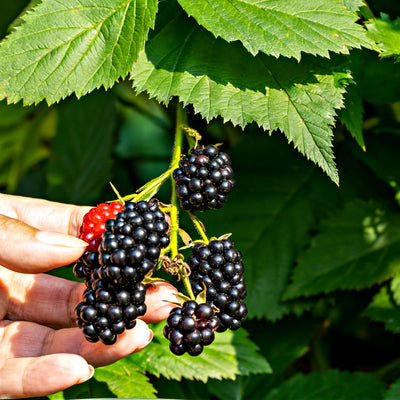Berry Plants For Zone 3
Blackberry Shrub
The shrub is a deciduous woody perennial dicot that can grow up to fifty feet tall. The primary components are the leaves, stems, and roots. The fruit of the blackberry plant is called a berry. Each plant has long prickly thorns, which can hurt if not handled carefully. They grow wild throughout Southeastern North America through Western Europe, Africa, Asia, Australia, and New Zealand. Blackberries are especially popular among foragers because they are easy to recognize and relatively pollutant-free.
The fruits are sweet but tart-tasting, with their sugars being made up mostly of glucose and fructose content. Contain significant amounts of vitamins c, A, B1, B2, D, E, and K. They are also rich in minerals such as calcium, magnesium, potassium, phosphorus, copper iron, manganese zinc, molybdenum selenium, Fluoride, chlorine bromine iodine They, fluorine strontium uranium.
The leaves of the blackberry and Wild Blackberry Bush in Zone 3 have a unique compound structure. They have leaflets and the leafstalk, part of the petiole or leaf stem. Five to eleven leaflets per leaf stalk are arranged pinnately along both sides of the frame.
The flowers are small, typically less than one centimeter wide, with five white petals. A calyx is a base for the petal that looks like a distinct green bell with five lobes. In between each of the bell sections, there is protruding hair. The shrubs have an angled frame and grow upright in shape.
The blackberry plant's fruits are small and round, only about one centimeter in diameter. They grow as a group on the frame and have shades of white, red, pink, purple, and black. The fruits go through changes in color as they ripen, with colors closer to red or purple being riper than lighter ones. When they become overripe or even completely rot, they turn black.

